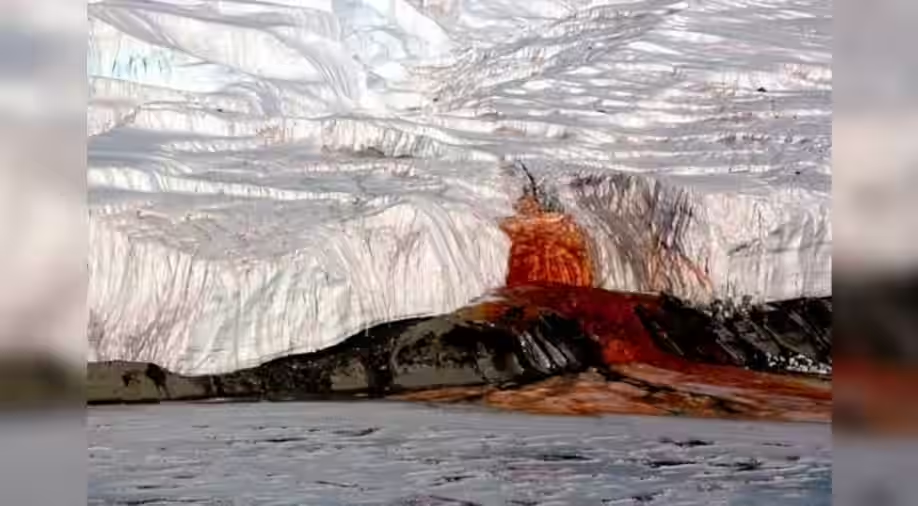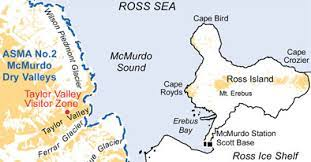TAYLOR GLACIER

Disclaimer: Copyright infringement not intended.
Context
The discovery of the cause behind the crimson red color of Blood Falls, located in Taylor Glacier in Antarctica.
Details
- Blood Falls, located in Antarctica's Taylor Glacier, has puzzled scientists since its discovery in 1911.
- Recent research has uncovered the reason behind the crimson red color of the waterfall.
Discovery of Iron-rich Nanospheres
- Samples from Taylor Glacier's tongue were analyzed in November 2006 and November 2018.
- Researchers identified the presence of iron-rich nanospheres as the cause of the red hue.
- These nanospheres contain elements such as silicon, calcium, aluminum, and sodium.
- The nanospheres were initially overlooked because they do not fit the definition of minerals.
Challenges in Detecting Nanospheres
- Previous methods used to examine the solids in the waterfall did not detect the nanospheres.
- Nanospheres lack a specific crystalline structure required to be classified as minerals.
- Advanced analytical equipment, including transmission electron microscopes, was necessary to detect the nanospheres.
Implications for Mars Exploration
- Scientists highlight the potential limitations of current exploration methods used on Mars.
- Rovers deployed on Mars may not be able to detect all forms of life beneath icy bodies.
- Spectroscopic equipment used in the study could not be taken to Antarctica and had to be used in overseas labs.
- The analysis conducted by rover vehicles on Mars is incomplete in determining the true nature of environmental materials.
- Nanosized and non-crystalline materials on colder planets like Mars may go undetected.
Need for Sample Return Missions
- Bulky equipment like electron microscopes cannot be attached to Mars rovers currently.
- To solve the mysteries of the Red Planet and explore nanoscopic evidence of life, samples collected by rovers must be returned to Earth.
- Analyzing the samples on Earth using advanced equipment will provide a more comprehensive understanding of Martian materials.
About Taylor Glacier
- Taylor Glacier is a glacier located in the McMurdo Dry Valleys region of Antarctica.
- It gained significant attention due to a unique phenomenon known as Blood Falls.
- The glacier was first discovered in 1911 by a British expedition.
Location and Significance

Disclaimer: Copyright infringement not intended.
- Taylor Glacier is situated in the southernmost part of the McMurdo Dry Valleys, a region in Antarctica known for its extreme cold and arid conditions.
- The Dry Valleys are considered one of the coldest and least habitable places on Earth.
- The glacier is part of the Taylor Valley, which is an ice-free valley within the McMurdo Dry Valleys.
- The region is of great interest to scientists studying climate change and the potential for extraterrestrial life.
|
PRACTICE QUESTION Q)Discuss the significance of Antarctica as a research destination and the challenges faced in conducting scientific studies in the region. (150 words) |




1.png)
